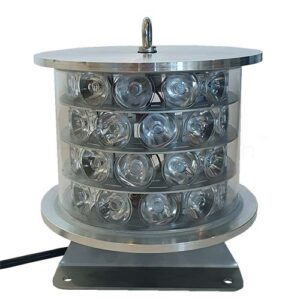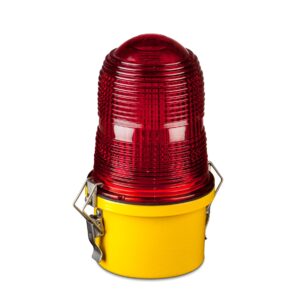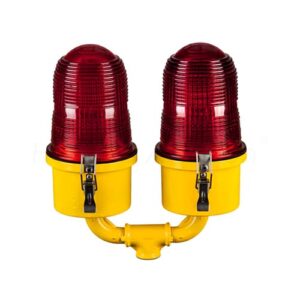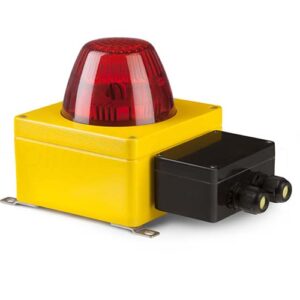Obstruction lighting
Holland Aviation Helideck obstruction lighting.
The marking or lighting of obstacles is intended to reduce hazards to an aircraft by indicating the presence of the obstacles.
Low-intensity obstacle lights, Type A or B, should be used where the object is a less extensive one and its height above the surrounding ground is less than 45 m.
An obstruction light used for aviation is meant to enhance the visibility of buildings or other fixed obstacles which may cause a distraction for an aircraft. Such obstruction lights are often placed on towers, and fences located near heliports or airports.
There are two common obstruction light types. * A red lamp that blinks or a constantly burning red lamp. * A white lamp that flashes 40 times per minute.
In some parts of the world, it is only allowed to use a red lamp. The white xenon lights are less and less common.
The old red obstruction lights or beacon lights used incandescent filament bulbs. Holland Aviation however uses a high-power LED. Which increases the life cycle of the lights. This also has a beneficial effect on energy consumption. Another advantage of the high-power LED is the longer lifespan of the LED lights.
White flashing lights are used during the daytime. During the nighttime, you see red lights.
A white medium-intensity flashing obstruction light is used on buildings and structures that are between 61 and 152.4 meters (200-500 feet). The building should be painted if the building is taller than 152.4 meters (500 feet). When the building is higher than 213.4 meters (700 feet) a white high-intensity flashing obstruction light should be used. By night and by day these lights give the best visibility.
The towers and masts should be painted in the color international orange or stripes of equal length in white and red. This is to improve visibility during the daytime.
These lights are installed on tall buildings and structures. These buildings can be towers, masts, water tanks, chimneys, tall buildings, cranes, electricity masts, wind turbines, and structures that are in the vicinity of airports or heliports.




